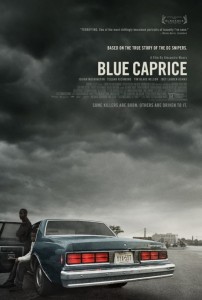
Release Date: September 13th, 2013 (Limited)
Currently Playing on VOD platforms
MPAA Rating: R
Director: Alexandre Moors
Film Pulse Score: 8/10
In 2002 a rash of murders swept across the Washington DC area with seemingly no connection and no motive. Dubbed the Beltway Snipers, a man by the name of John Allen Muhammad (Isaiah Washington) and a boy named Lee Boyd Malvo (Tequan Richmond) began randomly shooting unsuspecting civilians in parking lots and gas stations. In Alexandre Moors’ Blue Caprice, rather than simply recreate these horrific events, the filmmakers instead opted to explore the perpetrators behind the attacks and, in turn, the very nature of evil.
Framing the story around the relationship between Muhammad and Malvo rather than presenting it as a typical thriller was a gamble that paid off in spades. The film looks at father-son relationships and the cause and effect of a broken psyche. This creates a much more intriguing and though provoking story, one that goes much deeper than just watching two guys murder people on screen.
As we discover Muhammad’s bleak, nihilistic outlook on society, his views are visually represented through the cinematography of Brian O’Carroll. With the exception of the opening scene where the two meet in Antigua, Blue Caprice is drab, depressing, and colorless. The grainy look and blue-grey color palette fit the tone of the film perfectly and add an artistic flair to an already stylish film.
In a film so reliant on conveying the emotional instability and complexity of its main characters, strong performances are a must. Thankfully Isaiah Washington and Tequan Richmond knocked it out of the park in their respective roles. Washington provides an award-worthy performance as Muhammad, a man whose emotions run the gamut from calm and reserved to crazed and psychotic. The supporting cast featuring Tim Blake Nelson, Joey Lauren Adams, and Leo Fitzpartick all do a fine job, however Nelson’s character of Ray was really the only substantial one.
In a film like this it would have been an easy out for the filmmakers to dehumanize and vilify these men by just showing the pain and suffering they caused to the 15 people they shot. It would have also been easy to create a procedural around the capture and conviction of the two. Fortunately, the high road was taken and Blue Caprice transcends the formulaic in favor of a deep retrospective on what makes these men tick. Supported by some outstanding performances and great visuals, this is the atypical type of thriller that we need more of on the screen.






